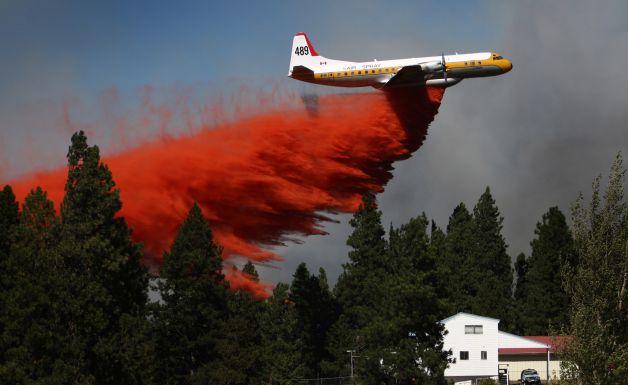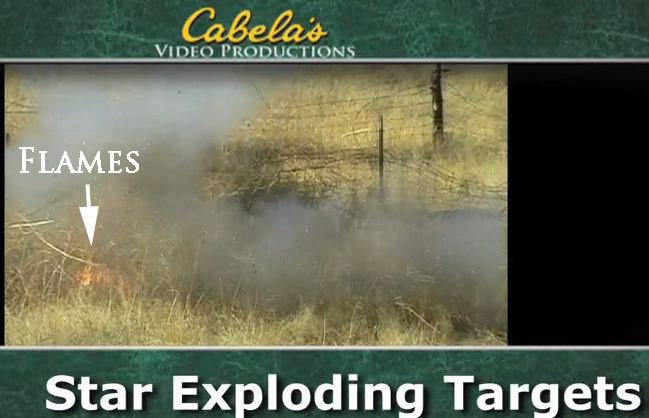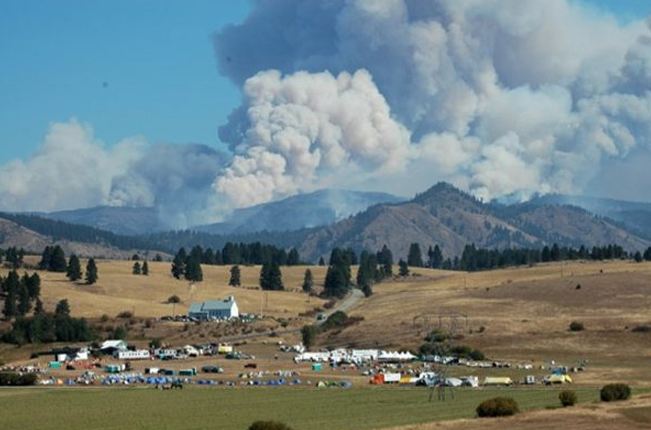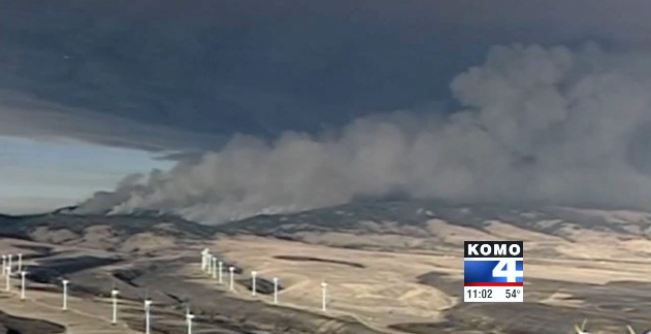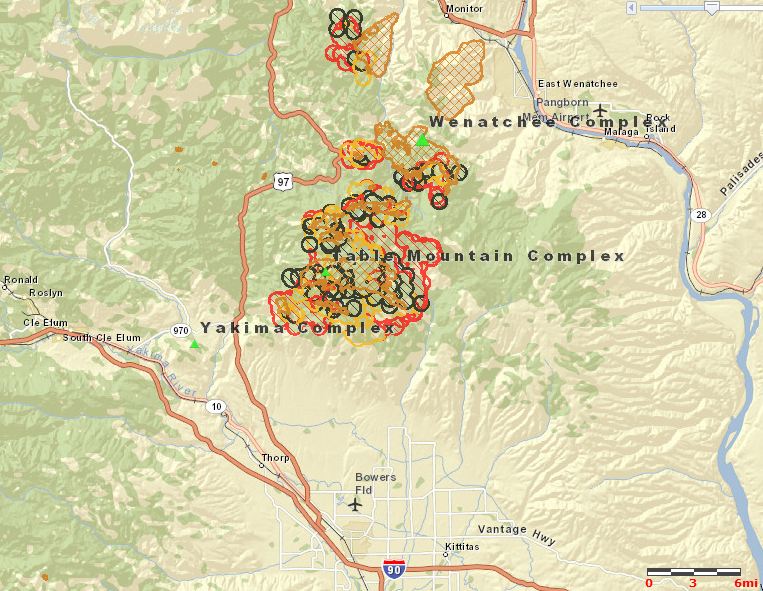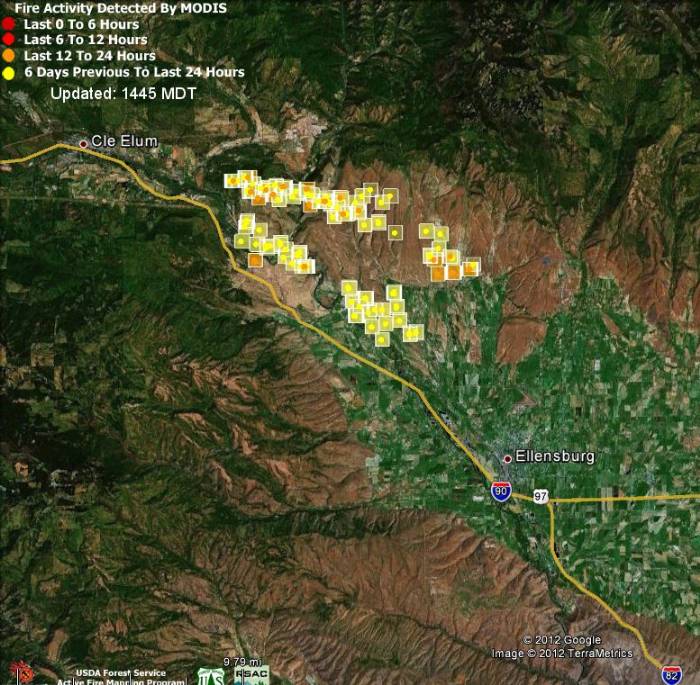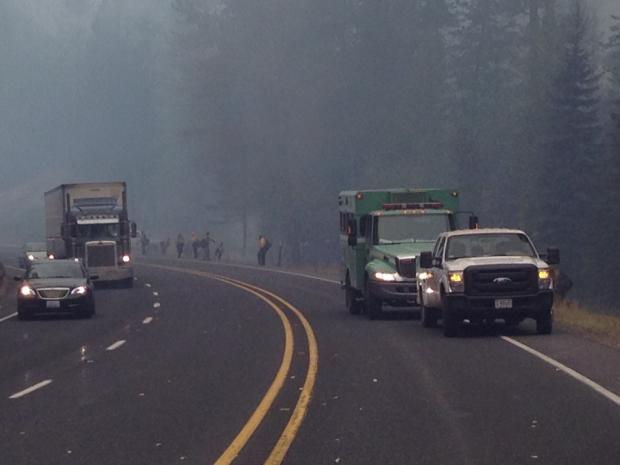
Wenatchee residents endured heavy smoke
The residents of Wenatchee, Washington were exposed to extremely high levels of wildfire smoke for several weeks in September and October. The Wenatchee Complex fires, started from a storm that produced 4,000 lightning strikes, blackened over 56,000 acres.
According to the Wenatchee World:
… by Sept. 14, there were more than 1,100 micrograms of fine airborne particles per cubic meter. That’s more than eight times the level considered hazardous for human health. (For comparison’s sake, the clear-sky day of Dec. 19 averaged just 8.4 micrograms.)
Wenatchee’s smoke levels remained high for weeks, averaging 200 micrograms daily until Oct. 12 but never reaching that peak again. But in Cashmere, as smoke poured from canyon mouths and settled, 24-hour average particle counts there reached as high as 928 micrograms between Sept. 17 and 22.
Cashmere schools closed for three days while officials struggled to proof them against smoke, which had infiltrated the buildings and reached dangerous accumulations. Parents in other districts opted to remove their kids from school: Between Sept. 9 and Oct. 12, there were 3,400 more student absences in Chelan, Douglas, Kittitas and Okanogan counties than the same period in 2011.
Fire burns DNR facility in Washington
Yesterday a fire in a Department of Natural Resources maintenance facility in Forks, Washington heavily damaged a fire engine and destroyed three pickup trucks. All that was left of the structure was the four walls and a portion of the roof. Some components from the engine may be salvaged even though the roof collapsed onto the truck.
Colorado Springs to hold community wildfire meeting
In the wake of criticism following their management of the Waldo Canyon fire which destroyed 347 homes last June, the Colorado Springs Fire Department has scheduled a community meeting “to increase wildfire awareness and emergency preparedness in the community”, according to a news release from the city. In addition to encouraging their residents in high risk areas to prepare for the inevitable wildfires, the city has a lot of room for improvement in their training and preparedness.
Coulson modifies 2 helicopters for night flying
Coulson Aviation has modified two helicopters so that they can fight fires at night. More information is at FireAviation.com
Extreme fire danger in Victoria
Our friends down under in Victoria will be experiencing extreme bushfire danger in the southwest part of the state on Friday, with the danger in the rest of the state rated as severe. Temperatures will be above 40C (104F) until the middle of next week. Heat health alerts were issued by the chief health officer for the central and north central districts, taking in Melbourne, Geelong, Ballarat, Marysville and other townships.
Video of helicopter crash in ocean off Brazil coast
The four crewmembers of a fire department helicopter walked swam away from their helicopter after it crashed into the ocean off the coast of Copacabana beach in Brazil. Check out the video HERE. The crash occurred while they were attempting to rescue a stranded swimmer.
The Rio de Janeiro state fire department blamed the incident on an undetermined mechanical failure.
Thanks go out to Dick


